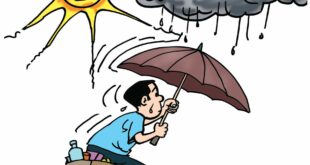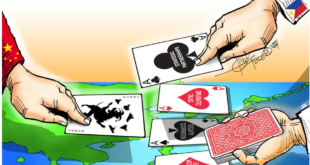“Corruption and cronyism are perennial concerns in any society, and the Philippines is no exception.

In the sprawling metropolis of Parañaque City, where urban development meets the relentless forces of nature, the recurring floods in four subdivisions have become a source of frustration, inconvenience and speculation.
One narrative gaining traction points the finger at the Villar family, a political and business powerhouse in the Philippines, suggesting their clout may be contributing to the persistent inundation.
However, as we wade through the murky waters of this issue, it is crucial to examine the facts and consider the broader context before laying the blame solely at the feet of one influential family.
The Villar family’s extensive business empire, which includes real estate development, has undeniably left an indelible mark on the landscape of Parañaque. The accusation that their influence exacerbates flooding in the four subdivisions raises questions about the intersection of political power, business interests, and urban planning.
To delve into this issue, it is essential first to understand the complex nature of flooding in metropolitan areas. Urbanization often leads to increased impervious surfaces, such as roads and buildings, which hinder natural water absorption and disrupt the balance of local ecosystems.
Poor drainage systems, inadequate flood control measures, and climate change further compound the problem. Pinning the blame solely on the Villar family oversimplifies the multifaceted nature of the issue.
The argument against the Villar family hinges on the alleged circumvention of regulations and standards in their real estate ventures. Critics argue that their clout might have influenced zoning decisions, allowing for the construction of ill-equipped developments to handle water’s natural ebb and flow. While this hypothesis is intriguing, it is crucial to verify whether the accusations hold water, so to speak.
Corruption and cronyism are perennial concerns in any society, and the Philippines is no exception. If there is evidence of regulatory lapses or irregularities in approving construction projects within these flooded subdivisions, a closer examination is warranted. However, it is important to avoid succumbing to the allure of conspiracy theories without concrete evidence, as doing so risks diverting attention from the root causes of the flooding issue.
Urban planning and infrastructure development are inherently complex processes involving a multitude of stakeholders, from government agencies to private enterprises. It would be overly simplistic to attribute the recurrent floods solely to the clout of the Villar family. A more nuanced approach requires scrutinizing the broader governance framework, regulatory oversight, and the collaboration (or lack thereof) between the public and private sectors.
One must also consider the potential unintended consequences of rapid urbanization. The demand for housing in a burgeoning metropolis like Parañaque often leads to the expedited construction of residential developments. This accelerated pace may compromise the thorough assessment of the environmental impact and the implementation of comprehensive flood mitigation measures.
To draw a connection between the Villar family’s clout and the flooding issue, one must critically evaluate whether their influence has been wielded to prioritize profit over the well-being of residents.
If the development projects were green-lit without due consideration for environmental impact studies or if corners were cut to maximize profits, then culpability becomes a more plausible proposition.
*****
Credit belongs to: tribune.net.ph
 Atin Ito First Filipino Community Newspaper in Ontario
Atin Ito First Filipino Community Newspaper in Ontario






